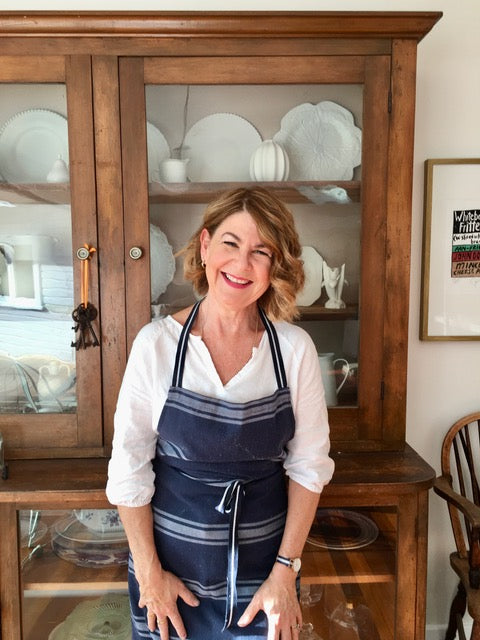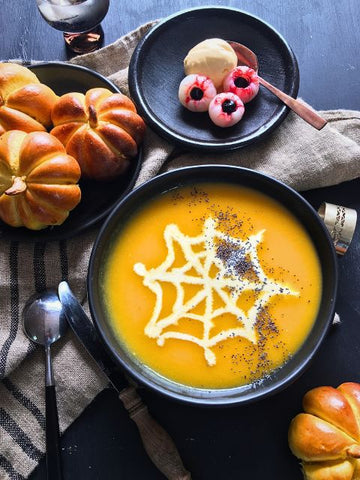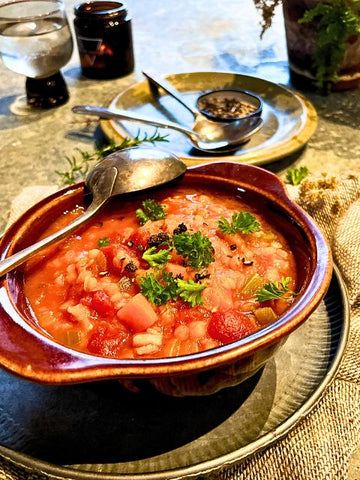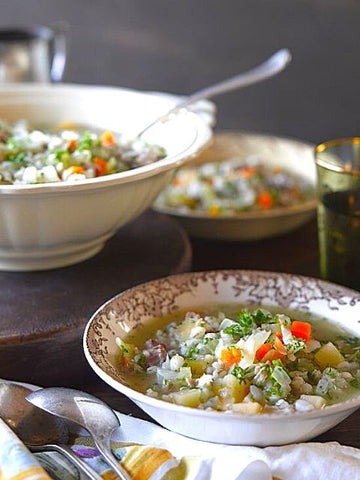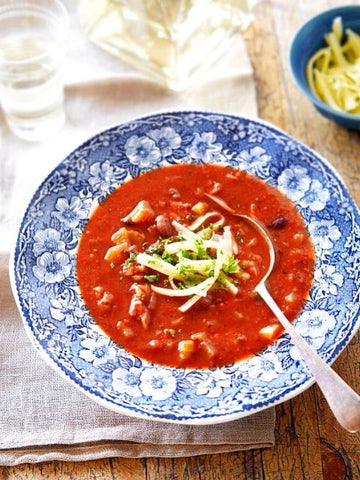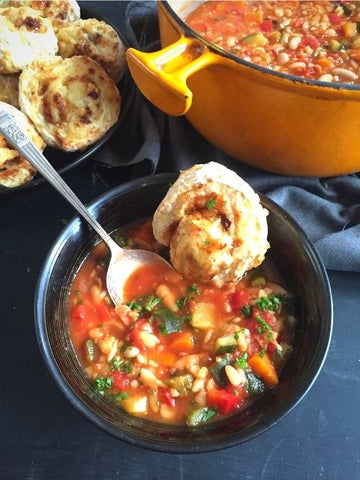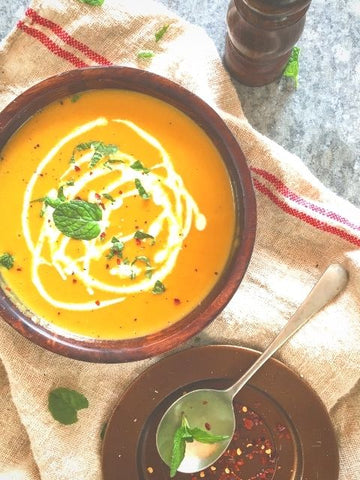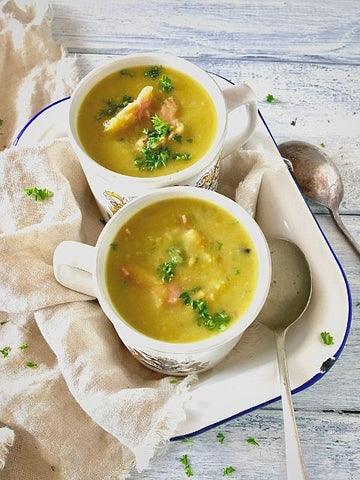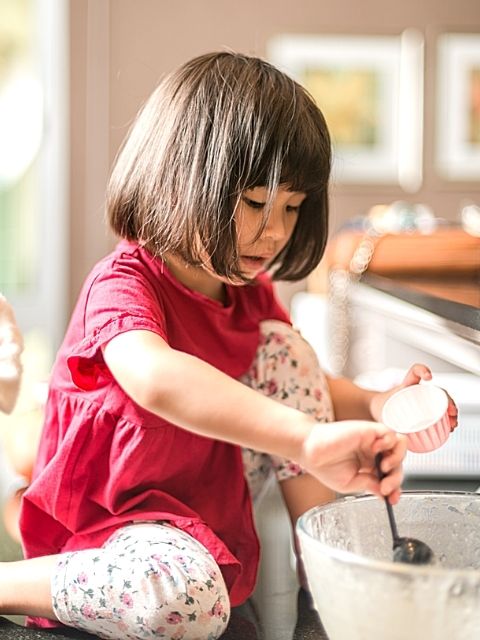First Steps in the Kitchen
How to teach your kids to cook
You don't have to try to train up the next Jamie Oliver or Gordon Ramsay. Families simply need to teach their kids, so as young adults they can look after themselves properly and, in their turn, their own families. The more interested they are, the harder they’ll try and the better it will taste.
- Kids generally have short attention spans, “a special cooking project” often appeals to adults who want to be in “the right frame of mind” but can be simply too slow for the kids. It’s the regular everyday stuff they need to learn, so give them a little task every time you cook.
- Too many instructions and not enough action will lose them, so think ahead about how to include them in meal preparation.
- Give them their own kit – a peeler, a little knife when ready, some cookie cutters, a lasagne dish for “their lasagne”…
- Provide a step or box to stand on so little children can reach the bench, pantry, and sink. Much of what we call “cooking” is really preparation, young children can frequently be involved without imminent danger from sharp or hot things.
Pre-schooler’s: A 4-year-old can stir a sauce with close supervision, wield a potato masher, taste and add seasoning, use cookie cutters and rolling pins (not as well as you, naturally but who cares what it looks like). They can sift and sprinkle, count out 5 potatoes, add ingredients to a salad, shake dressing in a jar, and help choose a menu.
If Elsie manages to smash the spuds with you helping hold the pot, they are “Elsie’s’ mashed potatoes” even if you finish them for her. Heap praise at the dinner table for the deliciousness of Elsie’s spuds. Next time Elsie will likely consider mashing the spuds to be something she and only she can do satisfactorily. Over time it becomes her job.
5 years up: At this age they should have their own veggie peeler – while more hands make light work, they also make more mess so accept it then let them get on with it. Doing it with them, rather than taking over when they get fed up, is less frustrating for everybody. Provide a green plastic scouring pad for scrubbing potatoes, it’s easy to hold and will do a thorough job.
At this age they can push the button on the processor, learning to “pulse” a mixture (Scones and pastry, mince and seasonings for burgers, fruit for a smoothie).
Try Simple measuring – ½ a cup, 1 teaspoon. Choose measuring equipment that is simple to use with clear markings.
When shopping Let them to help select the fresh items, even a very young child can choose a nice-looking apple over a “yucky one”.
8 years up: It’s time to let them have a go. Reading comprehension is essential to using recipes. Rewrite recipes using simple language and omitting all cooking jargon. Kids this age often enjoy baking for the family and helping with dinner.
-
Try some "assembly style" dishes if they can’t yet manage a simple recipe. Fresh fruit salad, jelly, a simple marinade for the barbecue, kebabs – keep them interested.
-
At this age they should be able to use some of the hot things with less supervision, let them make pancakes for breakfast or stir the cheese sauce for dinner.
Teach them safe kitchen habits
-
Never leave a sharp knife in a sink of water - someone may not see it and cut themselves reaching into the water
-
never try to catch something you drop, instead jump out of the way in case one day you instinctively try to catch something hot or sharp
-
wear shoes - boiling water, oil or a dropped knife will all end up on the floor where your feet live
-
turn pot handles inwards so you don't bash into them walking past and tip scalding water on the floor, the dog or the baby
-
Never hold anything with a damp cloth. Water conducts heat so may result in a burn
Establish a “kitchen code of practice”
- Ask permission
- Wash your hands
- Read the recipe first- check you have all the ingredients
- Check you have enough time
- Clean up your mess.
10 years up: Time to be making regular real meals. Help and supervision will be needed, tears will be shed, probably yours, but every meal they make is one you won’t have to, so persevere.
Choose recipes with only one side dish or One Pan type dinners. Coordinating several different dishes takes a lot of practice so avoid the " full roast dinner"or offer to make the salad or side dish while they do the mains.
Reverse the roles, lay the table and do the dishes for them if that is what you expect them to do for you.
Eat what they have made and sing their praises whatever it tastes like.
Link recipes with another interest such as a book or TV character – Lemony Snicket's young Heroes cooked Pasta Puttanesca, Harry Potter loves sausages and treacle tart, whip out some CS Lewis for an excuse to make crumpets and Laura Ingalls Wilder's "little house" books are packed with food stories.
14 years up:Time for the regular cooking rota. In a few short years they’ll be fending for themselves (with any luck). Ensure they know how to make the kinds of foods that they like to eat, healthy potato wedges, burgers and pizzas, pasta sauce, chilli, a cake or something they can share with flatmates…
Talk about fruit and veg and servings sizes cos they are the “super-size me” generation. Let them cook for their friends as well as the family.
Include all the kids in meal planning. What does everyone like? what is in season? what should we be eating more/less of? Who would like to try cooking this or that?
Drag older children around the supermarket from time to time and discuss the grocery budget or they won’t know there is one.
Beyond baking: Many kids never get beyond baking as they get frustrated trying to find suitable savoury/dinner type recipes within their ability when the mood to cook strikes them.
Use a clear file to store “their recipes”. The plastic sleeve pages wipe clean easily, and outgrown recipes are easily removed.
The kids can print recipes from the internet, pages can be cut from magazines and handwritten recipes can be slipped in and safely stored.
In the front include a metric conversion table and some basic tips so they don’t need to ask you every time.
A starter recipe file for the kids might include:
- a recipe for pancakes
- a good basic biscuit - chocolate chippies or Anzacs
- a chocolate or banana cake
- a few easy family meals like Spaghetti Bolognaise or burgers
- a crumble, bread and butter pudding, or a sponge pudding
- a couple of easy sweets like coconut ice, fudge or sherbet
Break the file into sections such as dinners, baking, desserts, sweets then add soups, side dishes, salads etc as they get more interested and accomplished. If you make something they love, give them the recipe and teach them to make it for themselves.
You’ll be amazed at the pride that comes from preparing a meal for the family, their pride in themselves for doing it and your pride in them for trying, so go on, teach them to cook. And remember, every meal they can make themselves is one that you won’t have to.
Table manners:
Cooking and eating go together, feeding ourselves may be instinctive but doing it nicely must be taught. Table manners vary from culture to culture but in New Zealand and Australia the following are common “good manners”
Don’t start eating until everyone has their meal
Don’t talk when your mouth is full
Don’t chew with your mouth open
Don’t lick your knife or plate
Don’t reach across other people at the table
And if there is cutlery laid out for several courses and you aren’t sure what to use, simply start at the outside and work your way in. The first set is for the first course and so on
When you have finished place your cutlery side by side on the plate
Don’t start clearing until everyone is finished
In European culture burping/belching, picking teeth, spitting etc are done in private
Learning table manners is an ongoing process and you can expect your mealtime conversation to be peppered with “how did you do in cross country today? and please finish your mouthful before you answer”, or “don’t use your fork like a shovel”... This stuff is much easier to notice and model if you eat at the table rather than in front of the telly.

